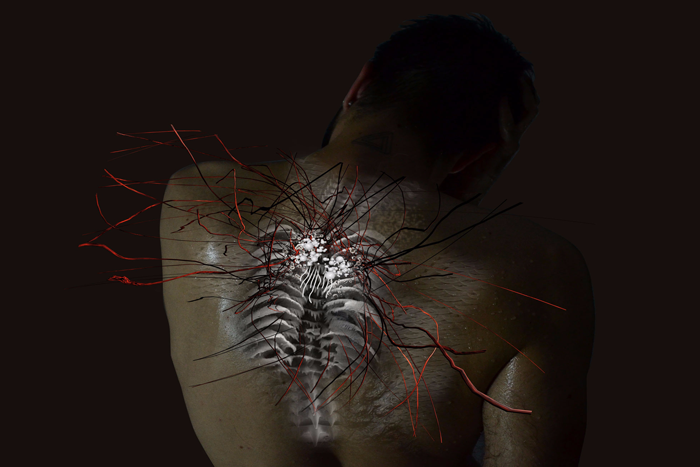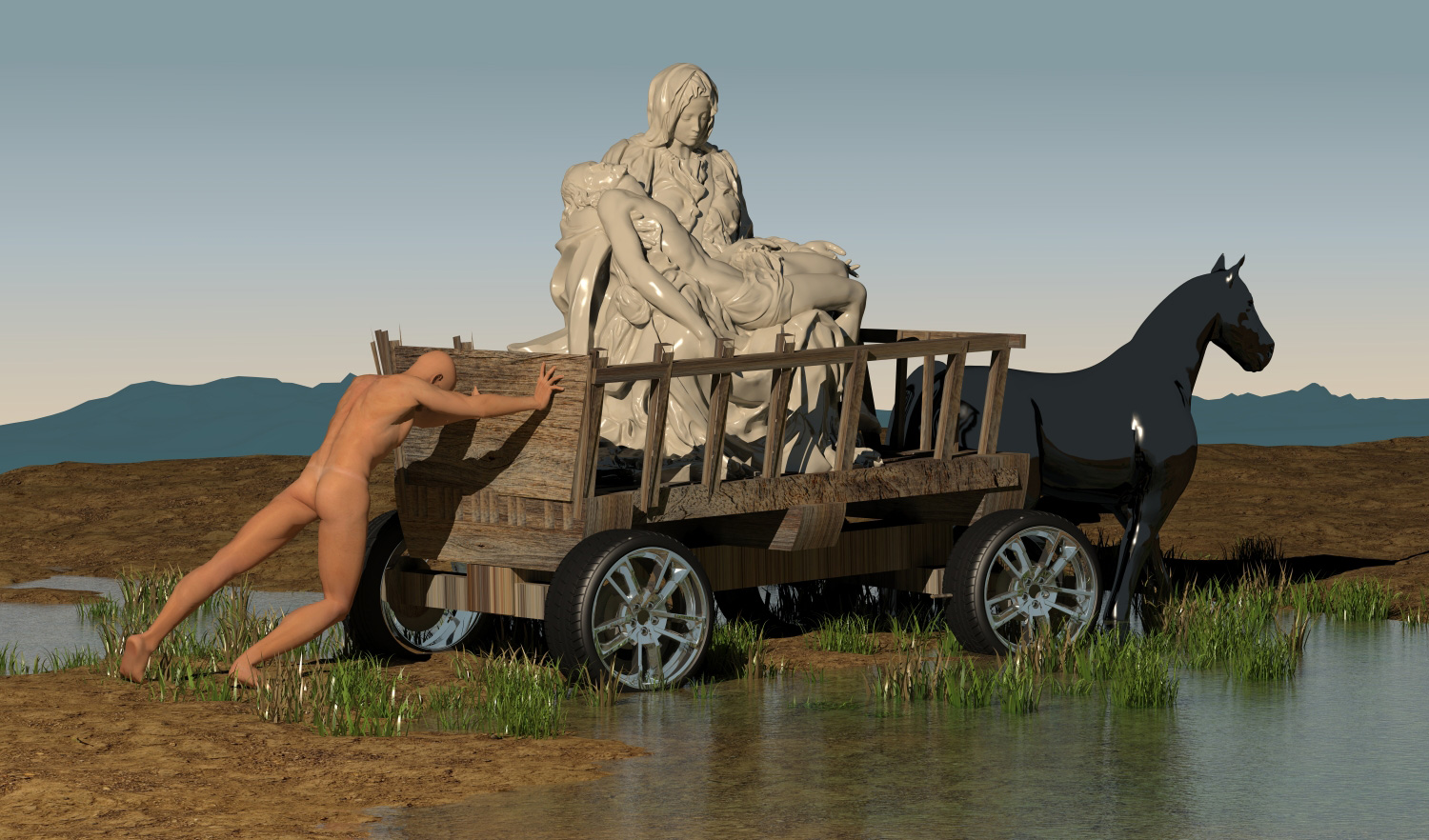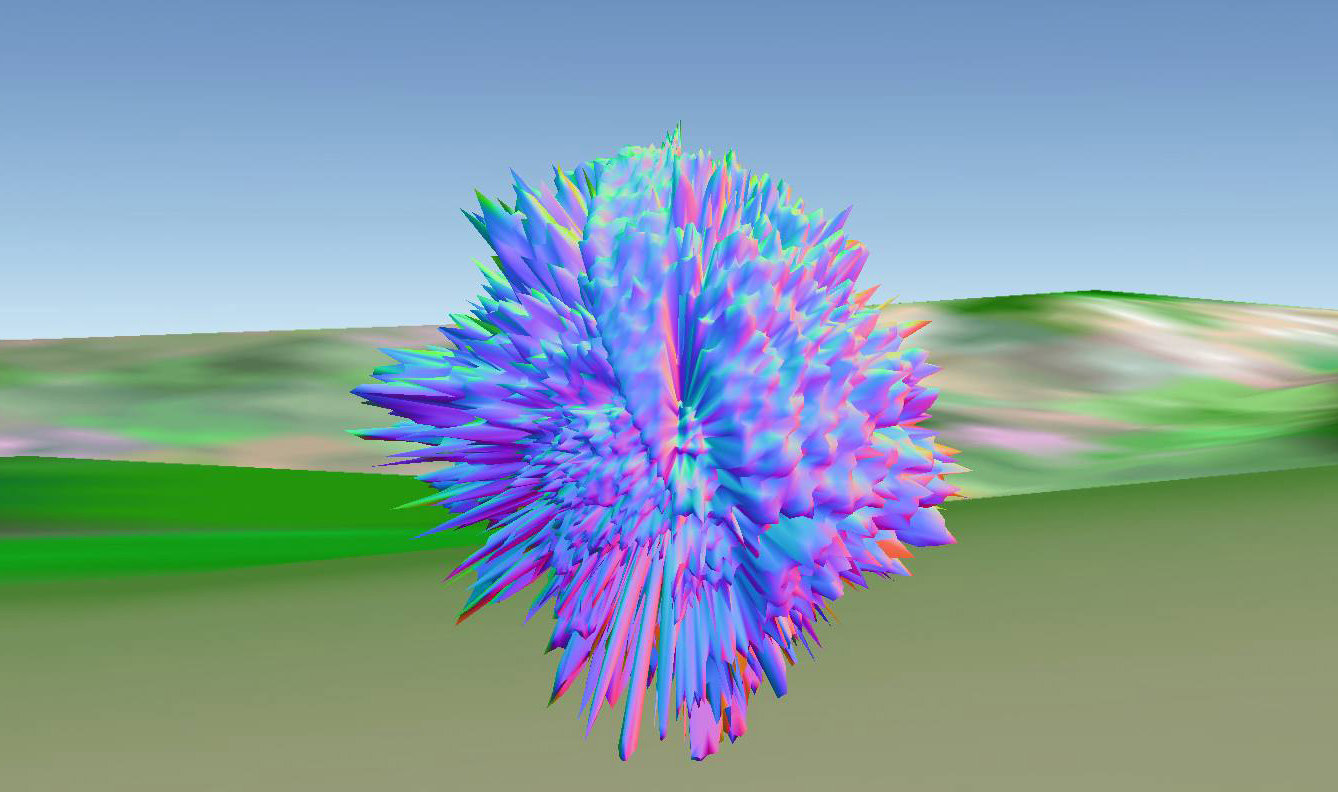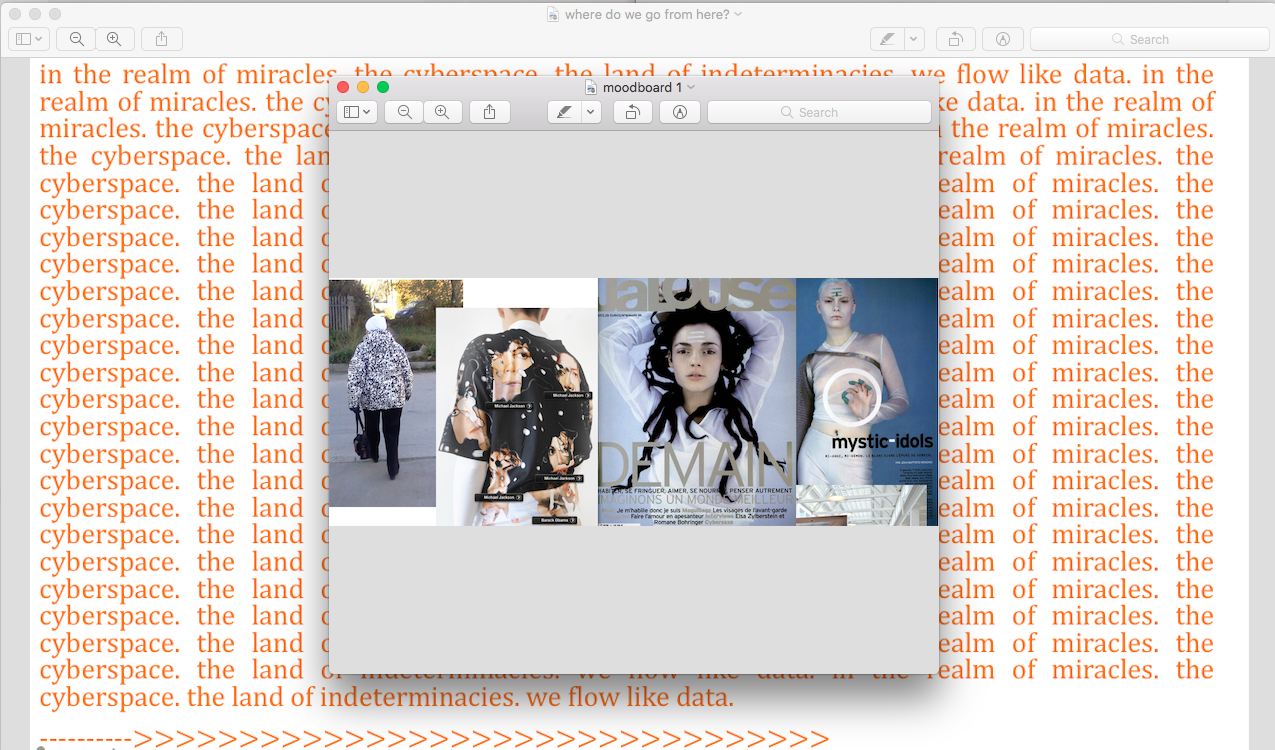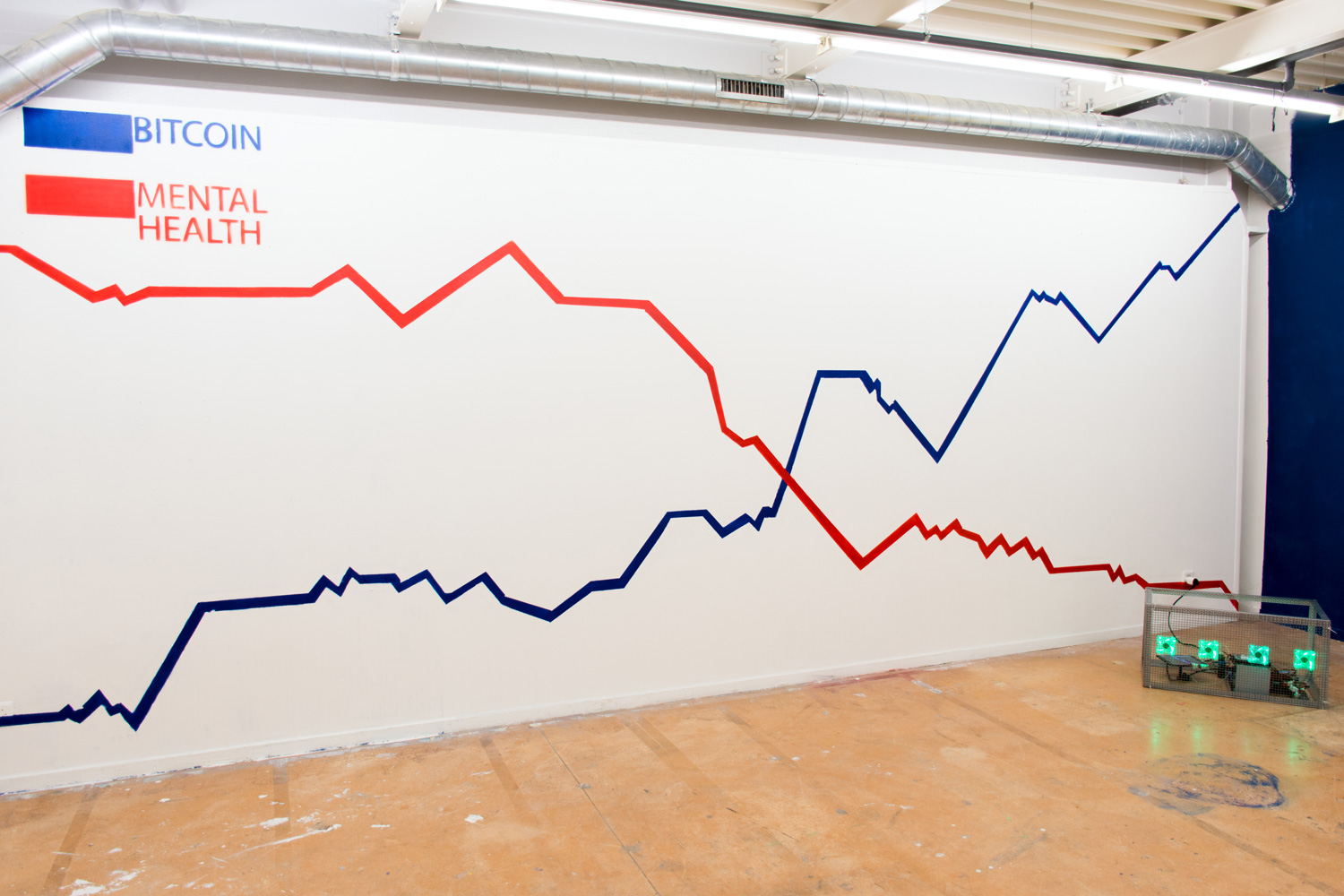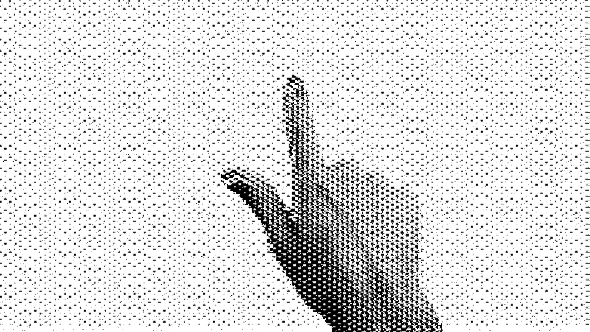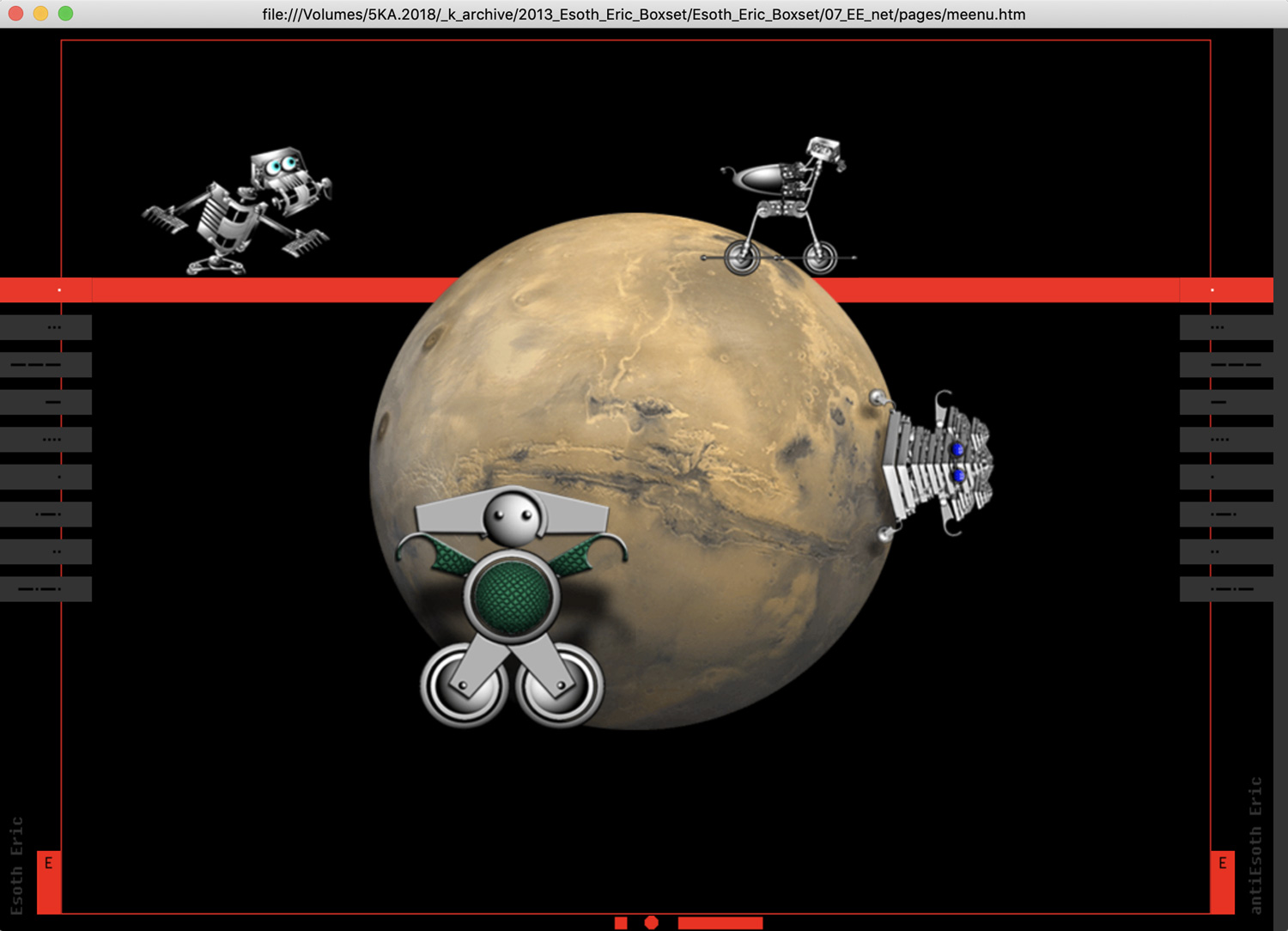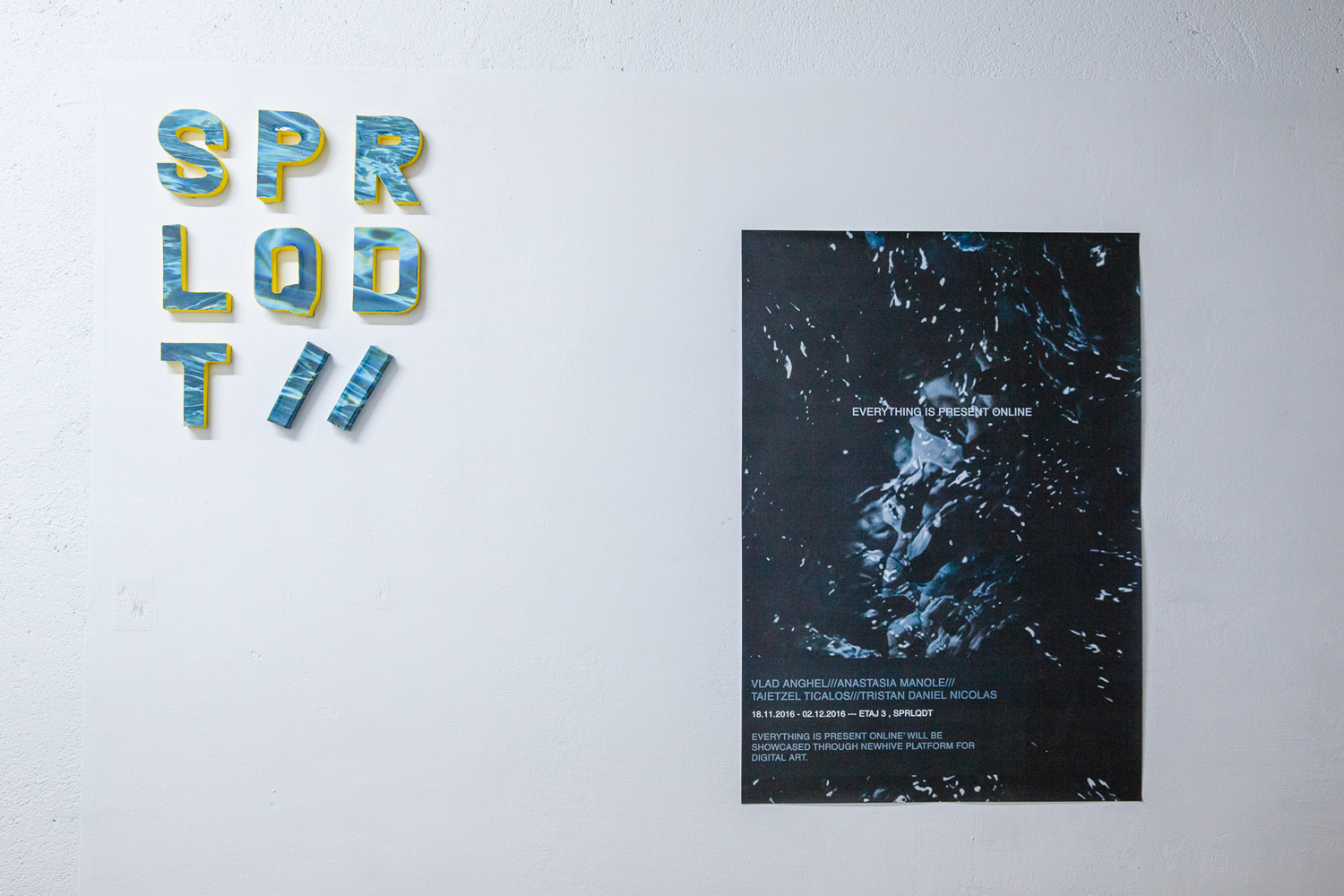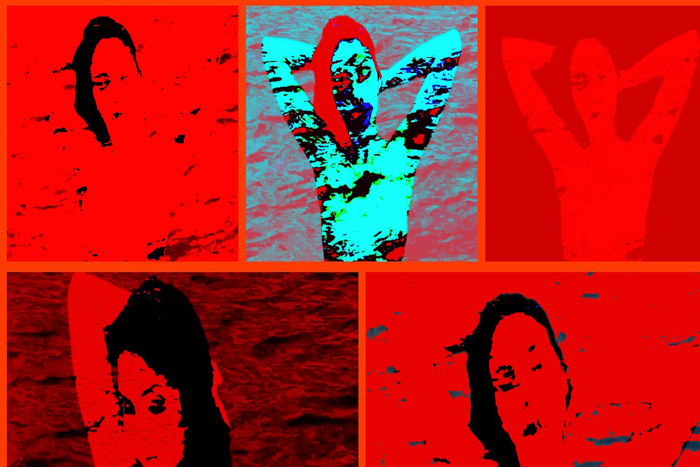Ştefan Tănase
Ştefan Tănase is an emerging Romanian artist whose practice tackles different areas of interest, extracting particularities from different domains that are then put together, decomposed and recomposed. He describes himself as a nomad in reality and virtual reality, taking interest in new ‘worlds’ and new ‘spaces’ for living.
| Interview by Sabin Borş |
Tristan
Tristan is a visual artist whose artistic practice is based upon the relationship between online identity and the effects it has on the mental imagery of oneself. His work is concerned with the intersection between online space and real life, focusing on the impact of Internet culture on identity. His interest in the digital performance of the self has been constant and manifested through mashups of pop items, patterns of religiosity and sentimentality, 3D creations and the obstinate build-up of an online persona which surpasses his live presence.
| Interview by Sabin Borş |
George Crîngaşu
George Crîngașu’s work ranges from installation to animated gifs, and it is mostly comprised of 2D and 3D compositions build on freely available content found rummaging through various corners of the internet. Re-assembling bits and pieces of data gives him a feel of participating in the sort of entropic nature information seems to rely on: any type of data should be perpetually in motion and perpetually in a state of change.
| Interview by Sabin Borş |
Adela Muntean
Adela Muntean’s works and research explore a multitude of ideas and techniques that the artist developed during her studies in media and cinematography. Her latest interest revolves around the possibility to relate immersive and digital media in the context of interactive documentary and media art.
| Interview by Sabin Borş |
Corruption of forms. Or fashion like a digital cloth – one ill-fitting draft
If I am to say fashion and the digital, the first thing that comes to mind would probably be the changes that brought the so-called democratization of fashion through online platforms and image sharing, especially the social media impact. ‘Instagram it!’ – you know how that goes. Or, on the other side of the spectrum, the relationship between the two, every so often surfaces in ‘scandals’ over digitally retouched images of celebrities and models – those idealized bodies that here and there lost touch with an anatomical bone structure. What if instead of the digital perfected body or the ‘materialized ideal body of the models’ – as Franziska Bork-Petersen called it – we were to shift the discussion towards touch? Can we treat fashion as an ‘in-process-of-becoming’ digital skin?
| Text by Edith Lázár |
Tudor Ciurescu
Tudor Ciurescu is a visual artist and student at École Cantonale d’Art Lausanne whose practice evolves around the interpretation of contemporary culture and the tech world, from bitcoin to memes.
| Interview by Sabin Borş |
GLITCH – A POINT OF VIEW
Glitches are everywhere, in every software or hardware that we use. They pop up from time to time but they are all unintended, being only involuntary malfunctions of the software code being run. What are we going to talk about in this essay is intentional glitches, software that generate glitches and artists using machine errors to display their work aesthetically.
|Text by Miron Ghiu |
Quantxt
Esoth Eric and antiEsoth Eric compose the hypermedia application Esoth Eric, developed on the same given equation that has 1, 0 or -1 as a result. the two projects can be accessed independently from two computers. the projected images are overlapping on the screen which plays the role of a melting pot from where the alternative results of the equation emerge.
| Text by Călin Man / reVoltaire |
Re-framing a space into multiple screens Superliquidato (SPRLQDT) – a hazy story
SPRLQDT presented itself as a capsule space, a backdrop where ideas and practices merging from digital art or derived from it, whether experiments and ‘orthodox’ media, could find a temporary place. For you see, the digital art scene was and still is to coagulate, but back in 2014, finding a platform for it was a constant struggle. Yet, between the hive-mind of the Internet and ideas unfolding in everyday conversations, rummaging through ways of visibility and exasperation, spaces can emerge; like this one, in a dome-like structure, 12 m², an oddity among the artists’ studios and galleries of The Paintbrush Factory in Cluj-Napoca.
| Text by Edith Lázár |
Thea Lazăr
Thea Lazăr is a young artist whose work ties Internet culture with real life, focusing on how technology influences us and our online behavior. She has been actively involved in various cultural projects and events in Cluj-Napoca together with the Aici Acolo collective.
| Interview by Sabin Borş |
Anastasia Manole
Anastasia Manole is the avatar created for her works online by Bucharest-based Gabriela Mateescu, a feminist artist who works with performance, video-performance, installation, and drawing.
| Interview by Sabin Borş |

